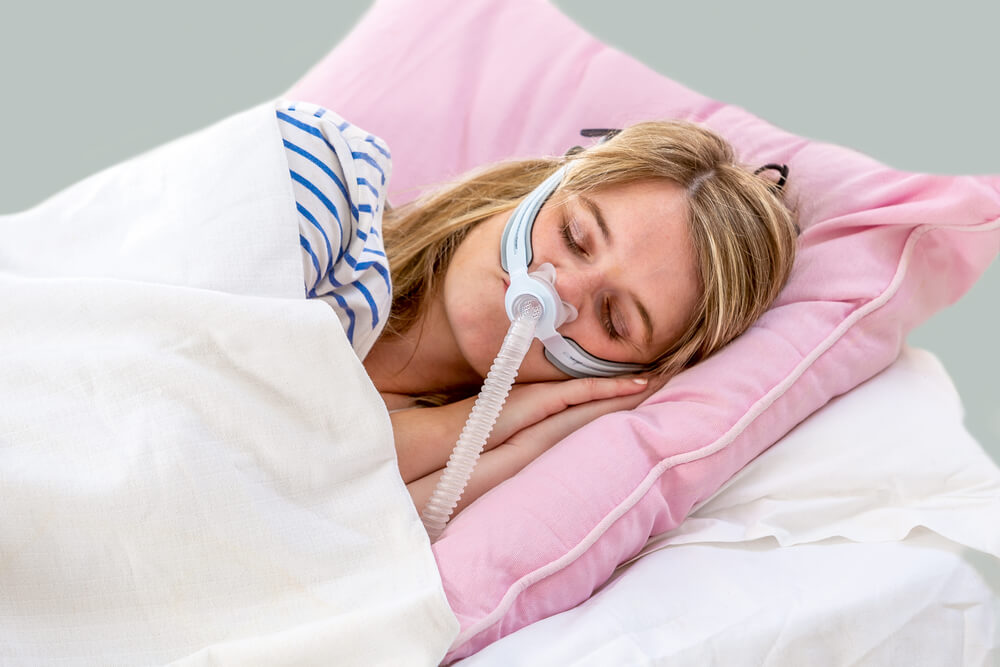CPAP therapy effectively treats sleep apnea but may be challenging to adjust to. The top patient complaint is discomfort caused by the mask. However, the correct mask with the proper fit allows most people to use CPAP therapy.
Mask Selection
Choosing the right CPAP mask is essential for comfortable use. There are many mask types available, each with its own advantages and disadvantages. The types of CPAP masks are:
Full face masks:
Our selection of full face masks cover the nose and mouth and are ideal for those who breathe through their mouths while sleeping.
They are capable of handling high pressure settings, which works better for more severe sleep apnea cases. Back sleepers find this mask more comfortable and its five straps ensure it stays on during the night.
Nasal masks:
Covering only the nose, these masks are perfect for people who breathe through their nose when sleeping.
Being small and lightweight are some of the top reasons to choose this mask. Nasal masks sits underneath the nose and are minimally invasive compared to their larger counterparts.
Nasal pillows:
These minimally invasive nasal pillows with small, soft cushions sit at the base of the nostrils and have minimal contact with the face.
Comfort draws people to these CPAP masks. The cushion reduces leakage by sending air directly into the patients nostrils. Their compact design also makes them perfect for travel.
Remember to try on different mask types to find the most comfortable and effective one for you.
Proper Fit
After selecting a mask, you should ensure it fits properly. A comfortable mask should be snug, but not tight and not cause red marks or skin irritation. The mask should minimize leaks, which can reduce the effectiveness of your therapy.
Checking your mask’s fit regularly is essential. Weight loss, weight gain, and changes in facial structure can affect the mask’s fit.
Other Tips for Comfortable CPAP Use
Here are some other tips for comfortable CPAP use:
Use a humidifier:
Add a CPAP humidifier to your setup to reduce dryness and irritation caused by CPAP therapy. Additionally, a CPAP humidifier prevents dry or running noses, chapped lips and nose bleeds.
Air coming from a CPAP needs a humidifier. The nose naturally warms the air coming into our noses when breathing regularly. However, this process does not happen when using a CPAP, so you need a humidifier.
Use a chinstrap:
A chinstrap helps keep your mouth closed while sleeping to prevent air leakage and dry mouth. They help mouth breathers breathe through their noses while asleep.
Comfortable, effective and durable, chin straps are adjustable to your face shape. Straps are ventilated to promote airflow and avoid overheating. Improve your sleep quality with our durable chinstraps.
Use a comfortable pillow:
A comfortable pillow reduces discomfort and lets you sleep better while using your CPAP machine. Choosing the right one will give you a better night’s sleep.
Pick a pillow that’s made from a soft material like memory foam. There are even contour pillows that cater to various sleeping positions.
Use comfortable bedding:
Comfortable bedding can reduce discomfort to help you sleep better while using your CPAP machine. The perfect bed is essential when undergoing CPAP therapy.
Always think about function when selecting your bedding. Get soft bedding made from all-natural fibers and a hypo-allergenic duvet cover. Also, your pillows should offer plenty of neck support.
Get used to the noise:
The machine’s noise can be disturbing, but you will adjust with time.
There are strategies to overcome the noise and sleep better. Consider using a white noise machine or getting a longer connecting tube. There are six foot and ten foot long tube to move the machine further from your bed.
Conclusion:
CPAP therapy effectively treats sleep apnea, but can be difficult to adjust to at first. Address mask discomfort by ensuring it’s properly fitted. Using a humidifier, a chinstrap, a comfortable pillow, and the right bedding can reduce discomfort and let you sleep better. Time and patience will let you use your CPAP machine comfortably.


Understanding CPAP Data and Usage Statistics
The Benefits of CPAP Therapy for Sleep and Beyond